It's mid-October 2011 and we've got some time off. We're all great fans of Frederick II, the Hohenstaufen Holy Roman Emperor and King of Sicily, so now's our chance.
You may not find this terribly rewarding unless you're included here, so this is a good time for casual and random browsers to turn back before they get too caught up in the sweep and majesty of the proceedings and can't let go.
We're out of Galatina now -- change Zollino -- change Maglie -- and down to the Adriatic coast at Otranto.
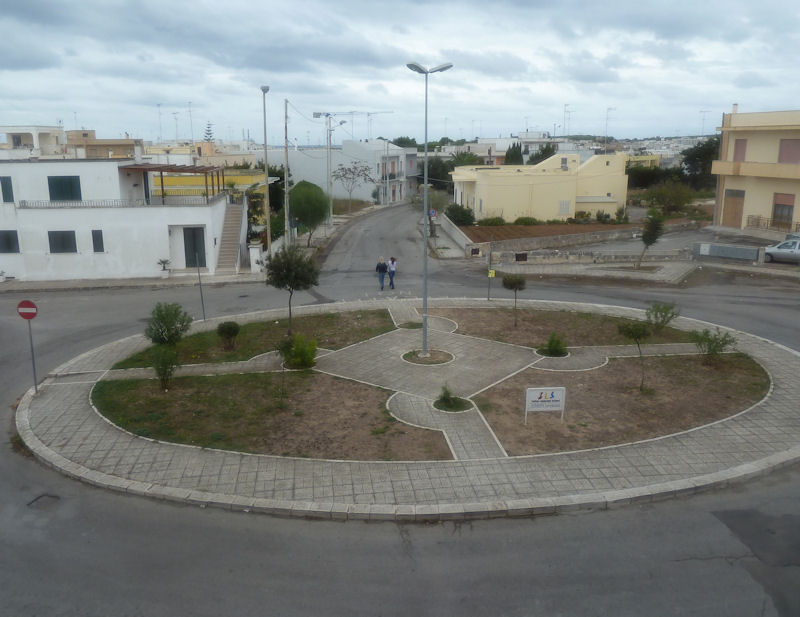
We're looking for The Castle of Otranto, made famous by Horace Walpole in 1764, normally considered to be the first of the exploding fashion for "Gothic novels" in English literature. This is not a promising start. But we will persevere.

We're still persevering, and at least it's downhill.
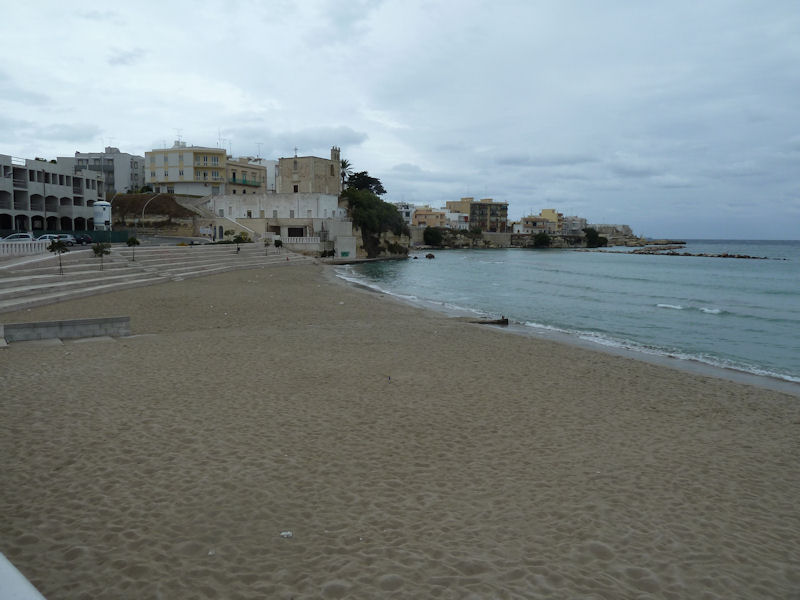
Our instincts were uncharacteristically reliable; here is the sea. Otranto was originally a Greek colony ("Hydruntum"), part of Magna Graecia, and the town resisted Roman hegemony by lining up both with Pyrrhus of Epirus (of "pyrrhic victory" fame) in the 270s BC and with Hannibal in the 210s BC. All in vain, but it subsequently became a bustling Roman port for trade with Asia Minor.
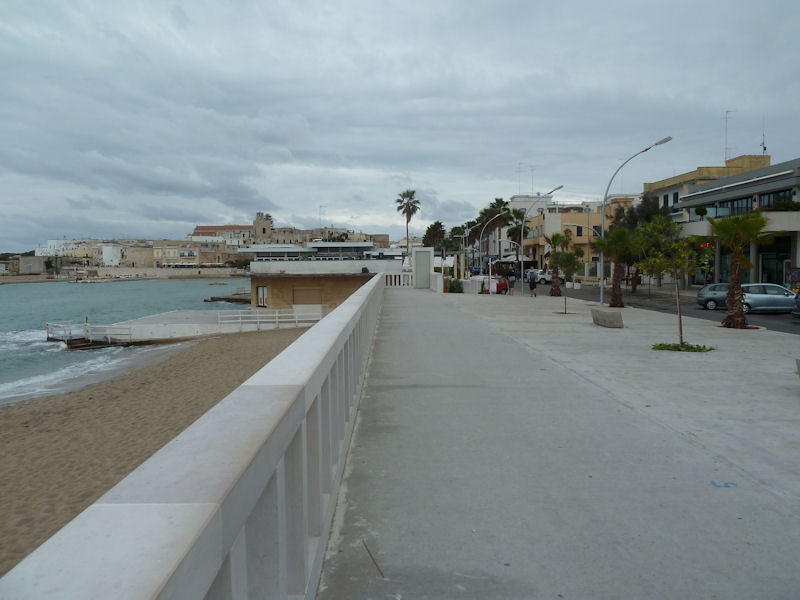
One tries in vain to imagine the excitement and crush of a hot summer day along the beach here (we'll never see that at first hand). After the fall of the Western Roman Empire, Otranto remained under the control of the Byzantines, until the Normans happened along; it was, with Bari, one of the last of the Byzantine cities to succumb to Robert Guiscard's Norman-led hordes in about 1070.

The very harbor that saw off boatloads of eager Crusaders for the "Holy Land"

Tiring of the beachside amenities, we're going up into the old town to try to find our Castle.

A vast esplanade in front of the old town, with its castle, its cathedral, and great shopping

Reminders of the ancient galleys that were once pulled ashore here

Into the old town at last, within the city walls
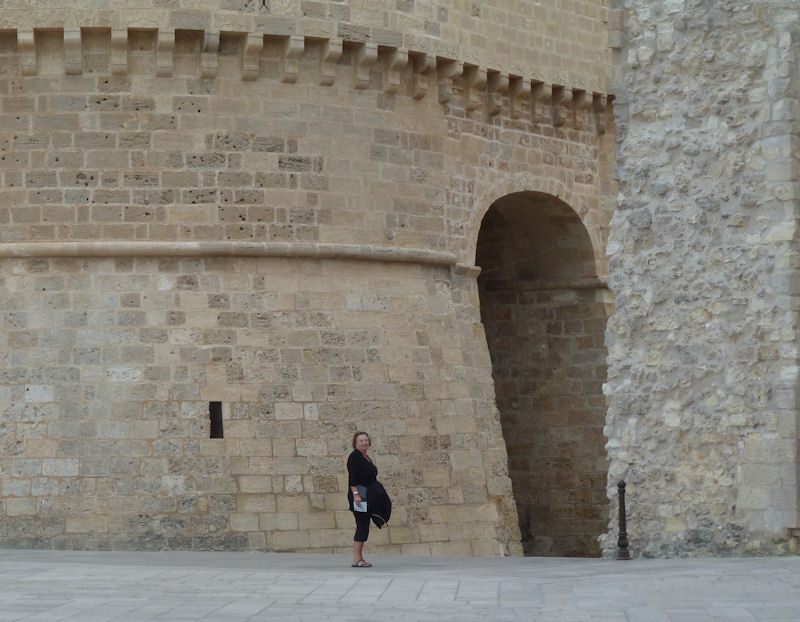
Kristin at the Porta Alfonsina, impatient

First, the shopping streets in the lower town

This is what the French call "lèche-vitrines" -- "window-licking". We euphemize that to "window shopping".
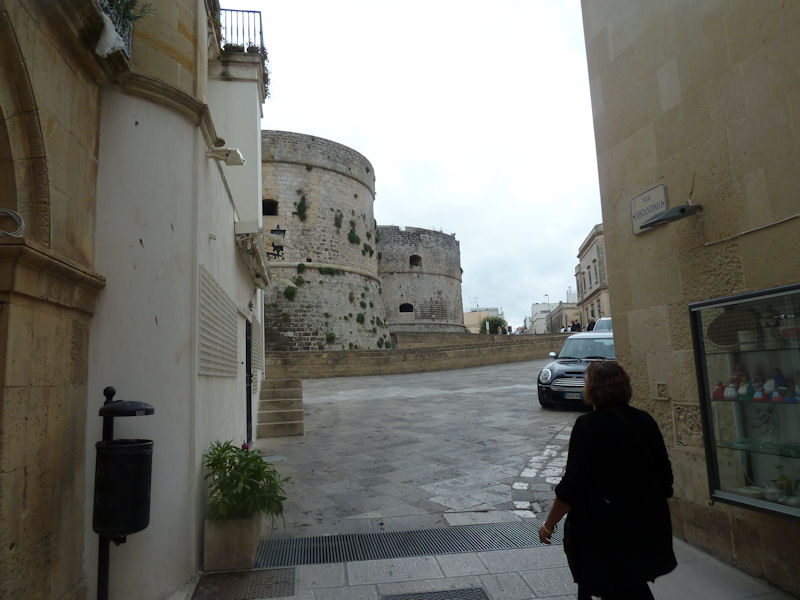
Up Papa Constantino street to see the Aragonese fortress (the "Castle of Otranto")
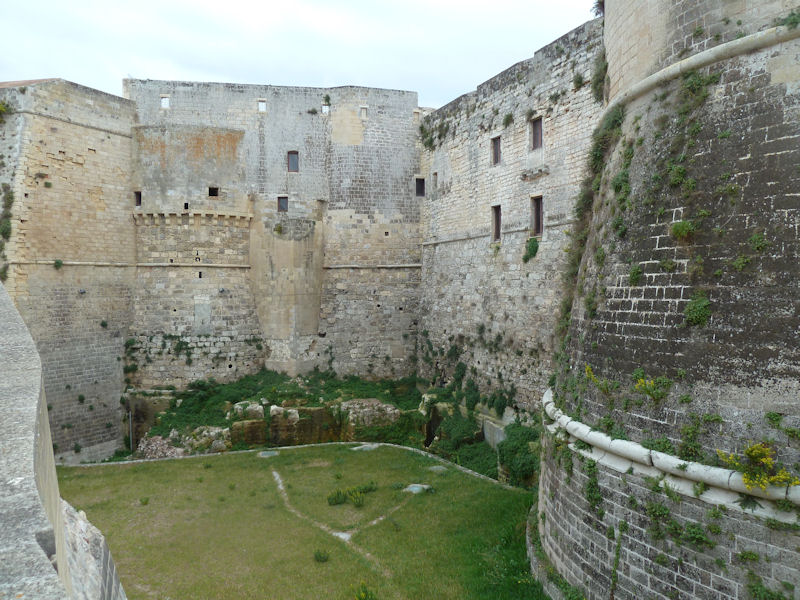
With its enormous old moat all the way round it

And its single entrance over what would have been a drawbridge "back in the day"
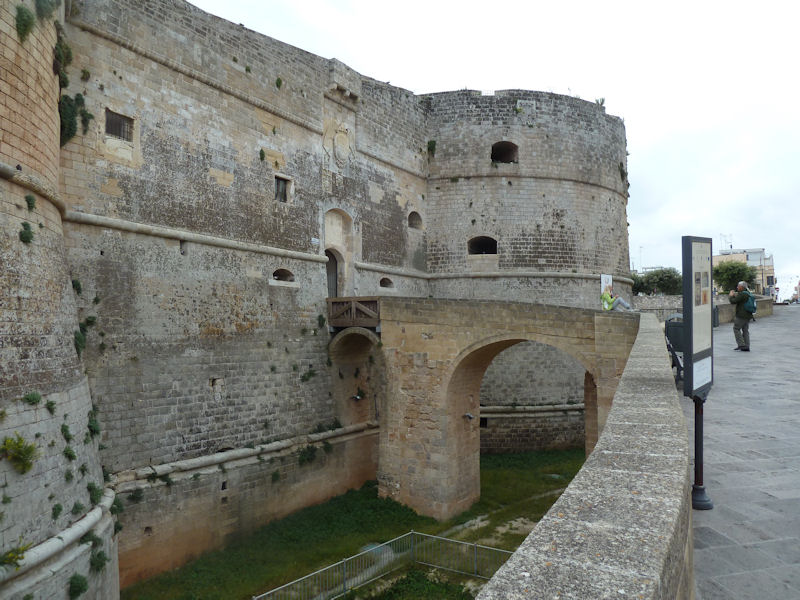
It is, however, closed for midday, and we must find some other improving use of our time.
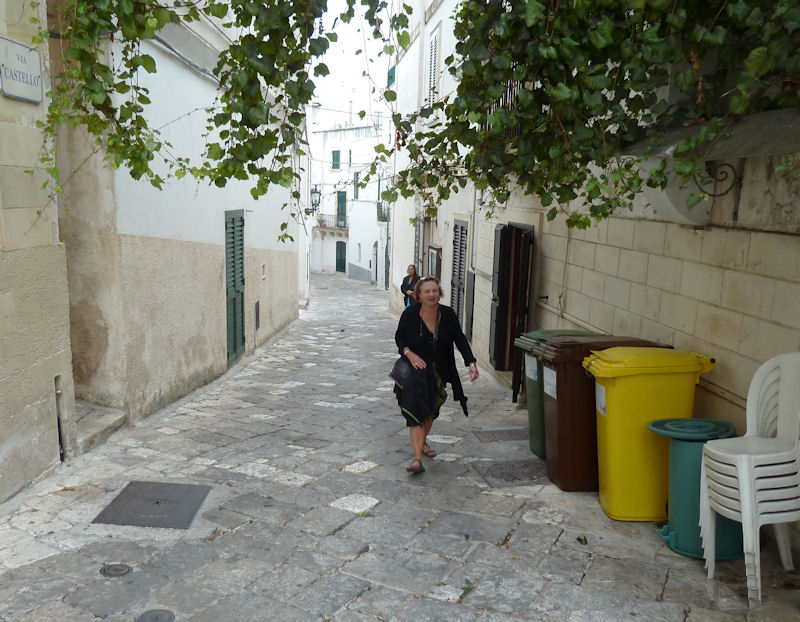
Like talking that nice restaurant lady into making some mid-afternoon lunch for us.

The castle's open now -- like Wal-Marts at midnight on "Black Friday", we're racing the crowd to get in first.

The previous castle was made defensible by Frederick II (the "Stupor Mundi"), but in 1480, the Ottoman Turks, mopping up the Mediterranean after finally knocking over Byzantium in 1453, got together with their friends the Venetians and rolled through this area, turkifying whatever came to hand. After a two weeks' siege, the Otranto folks surrendered on promises of safe conduct, but Mr Gedik Ahmet Pasha surprised them by insisting that they convert to Islam first, but they wouldn't, and Bob's your uncle!

The following year, Alfonso of Aragon came over from the west coast and de-Turked the city again, and he commenced work on a new fortress (this one) between 1485 and 1498. Those huge stone cannonballs look potentially awful.

Kristin wandering the Aragonese halls at leisure

The Castello Aragonese's main courtyard. The Holy Roman Emperor Charles V brought things up to date for the 16th century age of cannons.

Up on the bastions. Like many civic fortresses, this one is well employed for local art exhibitions, but I didn't like the photographic exhibit on show at this time and hurried on.

I did, however, like the flying lawn chairs.
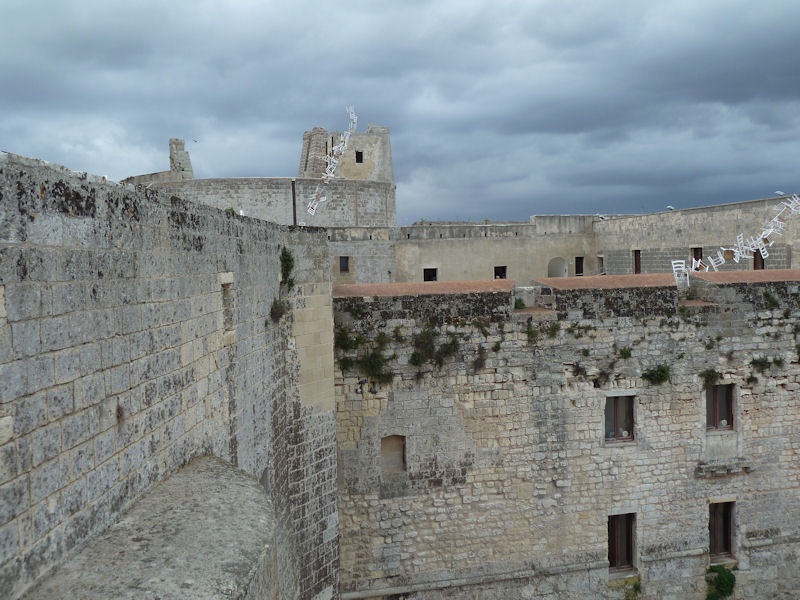
In fact, lots of lawn chairs
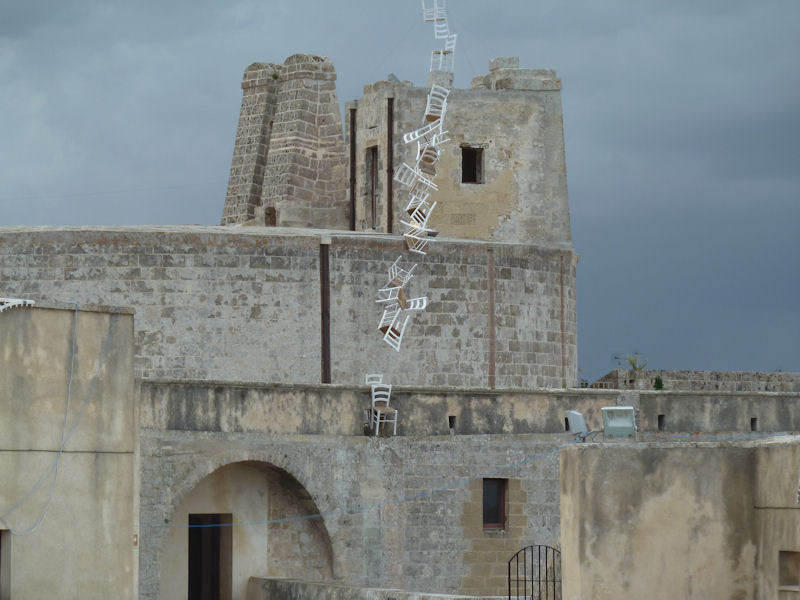
Excellent, even inspired, lawn chairs

The Castle of Otranto consists of three round towers and a huge bastion, called the Punta di Diamante or Diamond's Head, jutting out over the port.
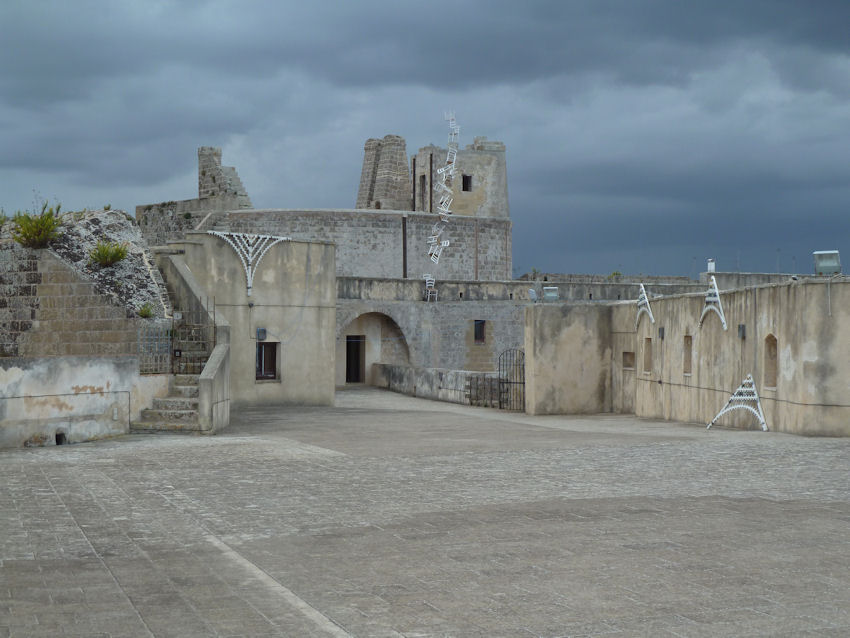
Superb lawn chairs

The courtyard. The weird pirate, Hayreddin Barbarossa (who didn't have a "red beard", but his older brother did), captured the fortress in 1537, but then lost interest and moved on. (Hayreddin wasn't his real name either -- Suleiman the Magnificent gave him that name, it means something like "Goodness of Islam"! -- but he may originally have been called Khizr, son of Yakup.)
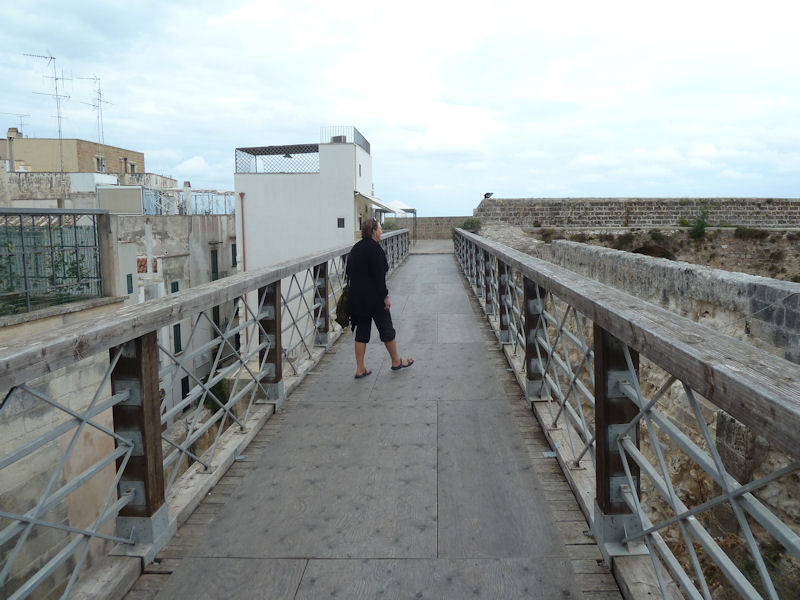
Kristin on her way out to the Diamond's Head bastion

That's the Edro IV, built in 1983, 89 metres long, flying an Albanian flag, newly in from the Albanian port of Shengzin.

The modern marina

The fortress from the bastion
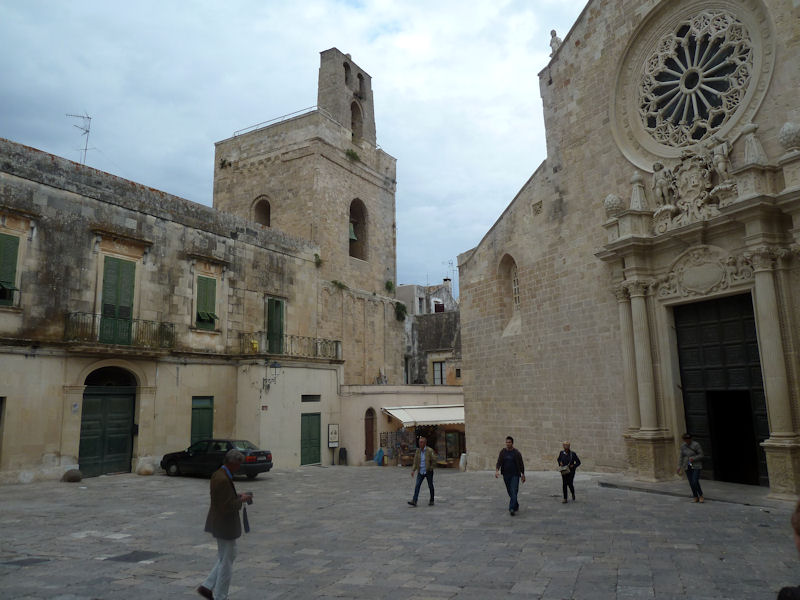
Just a block over, we're ready to see the famous mosaics of the Santa Maria Annunziata cathedral. The church was built by Roger I (Guiscard's younger brother) in about 1088, but the mosaic floors were created a hundred years later.

Is this weird, or what? The mosaic floors from about 1165 have got all kinds of bizarre biblical stories and some even more bizarre allegorical and historical things, including King Arthur, Alexander the Great, people with other people in them, animals eating each other, you name it.

And lots of tusks
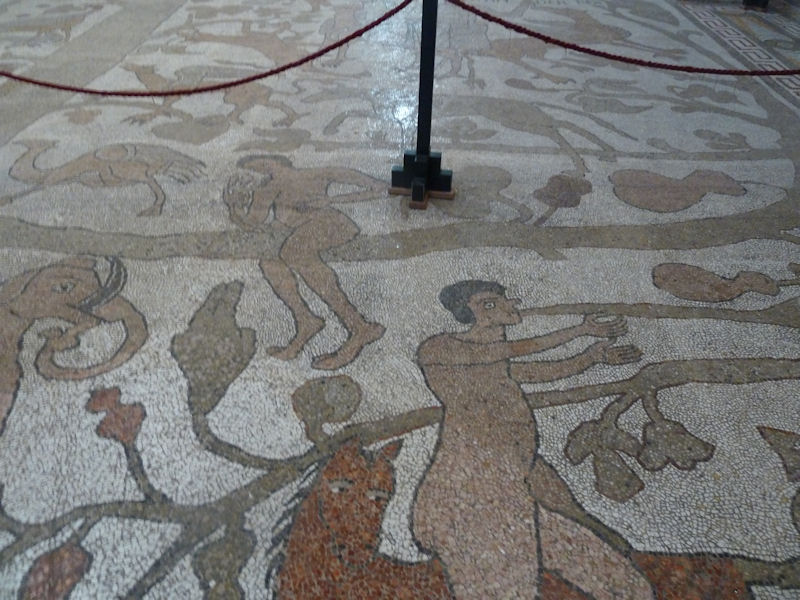
And looks of astonishment
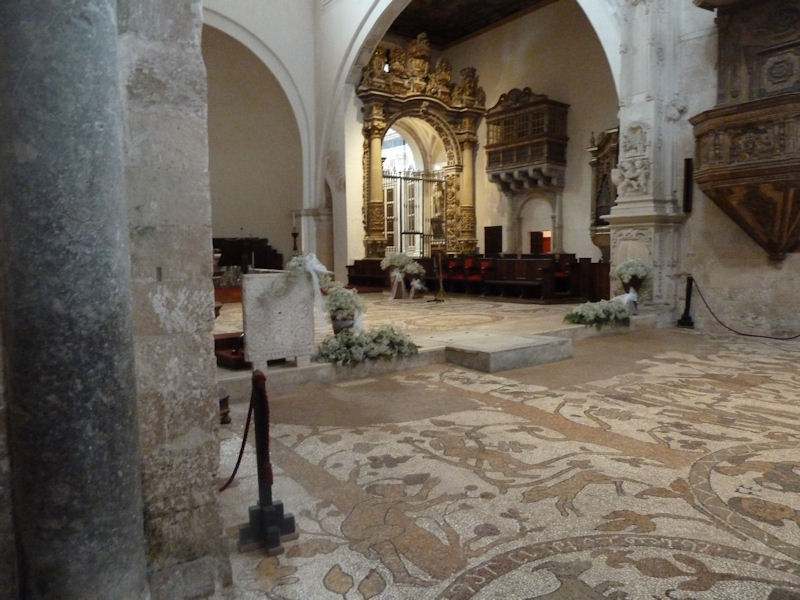
This is a really funny cathedral!

And this scene, if you examine it closely, will confuse you.

And this, if you examine it, will bring you up short. One does see a mention of "infernus" and "satan", so that's a clue.

And this may be worse.
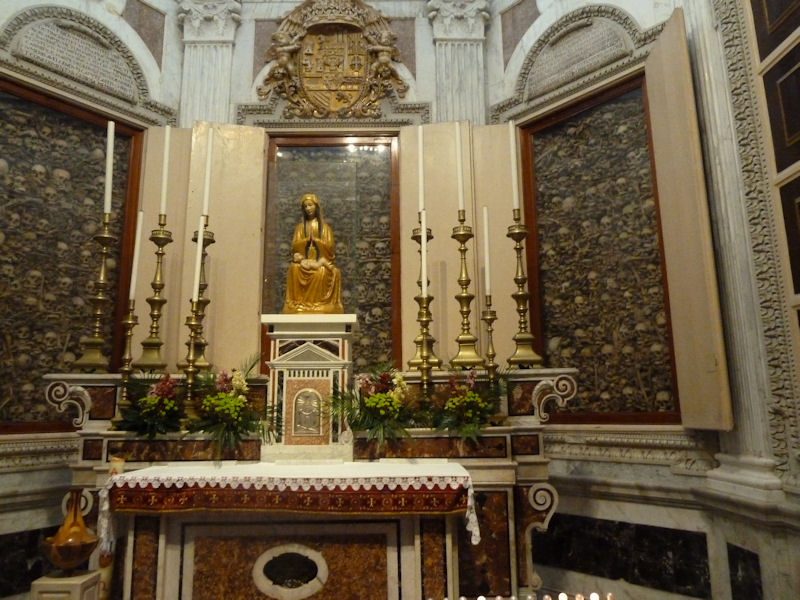
And this is definitely far worse -- wall displays filled with human skulls. Imagine trying to get zoned for one of those nowadays. Those are the Unfortunates of 1480 stacked up in there (nowadays we just post their names on a big plaque on a memorial wall).
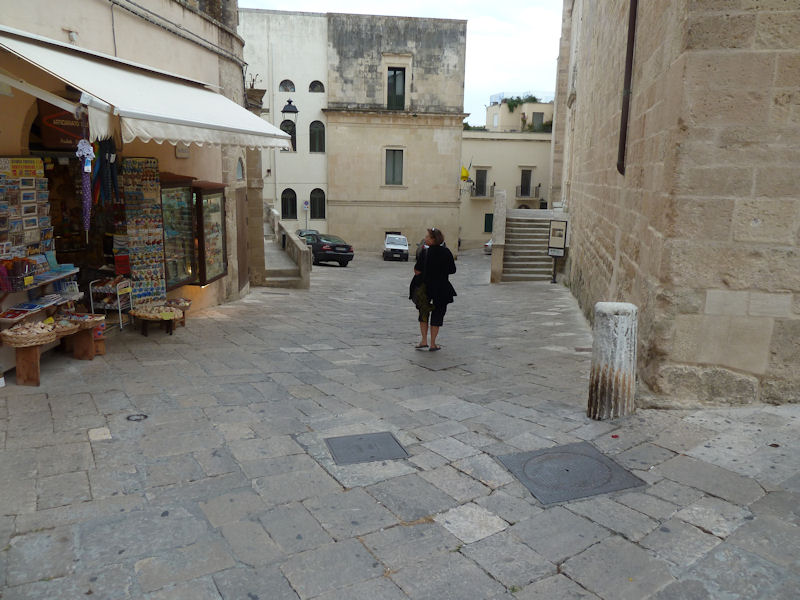
That was great. Now we're headed back up the hill to the "stazione".

Ready for dinner in Lecce (change in Maglie)

Lecce -- the Via Prioli -- after dinner a few blocks over at the Volo restaurant near the Prefettura Provincia, where we ate EVERY SINGLE NIGHT!
(Update Sept. 2012: The Volo restaurant has moved to Via Guglielmo Paladini 9, near the Duomo in the historic centre.)
 Dwight Peck's personal website
Dwight Peck's personal website




















































